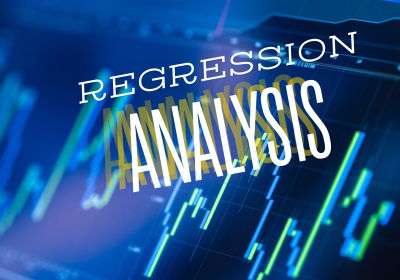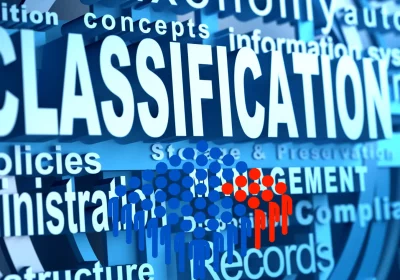
Top Data Analyst Interview Questions and Expert Answers (2025 Edition)
Are you preparing for a data analyst interview in 2025? Whether you're a recent graduate, a career switcher, or an experienced professional aiming for your next big role, knowing what to expect in the interview room is crucial. Data analyst interviews are designed to test not just your technical skills like SQL, Python, Excel, and statistics but also your ability to think critically, solve business problems, and communicate insights clearly.
In this comprehensive guide, we’ll walk you through the most frequently asked data analyst interview questions along with sample answers and tips to help you stand out from the competition and land the job you deserve.
Table of Contents
General Data Analyst Interview Questions
These foundational questions are designed to assess your overall understanding of the data analyst role, your approach to working with data, and how you fit within a team or organization.
What does a data analyst do?
A data analyst collects, processes, and interprets data to help businesses make informed decisions. This includes tasks like cleaning datasets, analyzing trends, building visualizations, and presenting insights to stakeholders. The goal is to translate raw data into actionable information.
How do you approach a new data project?
I begin by understanding the business problem and defining clear objectives. Next, I gather the relevant data, clean it, and perform exploratory data analysis (EDA). From there, I apply statistical and analytical methods, generate insights, and communicate the findings through dashboards or reports. Collaboration with stakeholders is key throughout this process.
Which tools and technologies are you most comfortable using?
I regularly use SQL for querying data, Excel for quick analysis, Python with pandas and matplotlib for deeper insights, and Tableau for visualization. I also have experience with Power BI and cloud platforms like Google BigQuery.
How do you ensure data quality and accuracy?
I perform data validation checks, identify and handle missing or duplicate values, and apply business logic to spot inconsistencies. I also document assumptions and verify results with stakeholders to ensure data accuracy.
Describe a time you used data to solve a real business problem.
At my previous job, I noticed declining customer engagement. After analyzing usage patterns and churn rates, I identified a drop in feature usage. I presented my findings to the product team, and they made improvements that increased retention by 15% over the next quarter.
Technical Data Analyst Interview Questions
Technical questions assess your hands-on skills with data tools and your ability to manipulate, analyze, and interpret datasets effectively. Expect questions across SQL, Excel, Python, and data visualization.
SQL Interview Questions
What is the difference between INNER JOIN, LEFT JOIN, and RIGHT JOIN?
INNER JOIN returns only matching rows from both tables.
LEFT JOIN returns all rows from the left table and matched rows from the right.
RIGHT JOIN does the opposite: it returns all rows from the right table and matched rows from the left.
Write a SQL query to find the second highest salary from an employee table.
SELECT MAX(salary) AS second_highest_salary
FROM employees
WHERE salary < (SELECT MAX(salary) FROM employees);How do you handle NULL values in SQL?
I use functions like COALESCE() to replace NULLs with default values, or IS NULL/IS NOT NULL to filter them. It’s important to identify and handle NULLs to avoid misleading aggregations or joins.
Excel Interview Questions
What are Pivot Tables and how do you use them?
Pivot Tables are used to summarize and analyze large datasets quickly. I use them to group data, calculate totals, and uncover patterns without needing formulas. They’re especially useful for creating interactive reports.
What’s the difference between VLOOKUP and INDEX-MATCH?
While VLOOKUP is simpler, INDEX-MATCH is more flexible and efficient. INDEX-MATCH works for both vertical and horizontal lookups and is more resilient to changes in the data structure.
Python for Data Analysis
How do you handle missing data in pandas?
I use .isnull() to identify missing data, and then handle it with .dropna() to remove rows or .fillna() to replace values. The approach depends on the data context and how critical the missing values are.
What’s the difference between .loc[] and .iloc[] in pandas?
.loc[] is label-based indexing (uses row/column names).
.iloc[] is integer-location based (uses row/column positions).
How do you merge datasets in pandas?
I use pd.merge() for SQL-style joins, specifying on, how, and left/right parameters. For concatenating datasets vertically or horizontally, I use pd.concat().
Statistics and Data Interpretation Questions
Statistics help analysts understand patterns, make predictions, and validate insights. Interviewers will test your grasp of core concepts, probability, hypothesis testing, and your ability to interpret results correctly.
What is the difference between variance and standard deviation?
Variance measures the average squared deviation from the mean, showing how spread out the data is. Standard deviation is the square root of variance and is in the same units as the original data, making it easier to interpret.
Explain the Central Limit Theorem (CLT). Why is it important?
The Central Limit Theorem states that the distribution of sample means approaches a normal distribution as the sample size grows, regardless of the population's original distribution. It’s vital because it justifies using normal distribution-based statistical tests in data analysis.
What is p-value and how do you interpret it?
The p-value indicates the probability of observing the given result (or more extreme) if the null hypothesis is true. A small p-value (typically < 0.05) suggests strong evidence against the null hypothesis, meaning the results are statistically significant.
When would you use a t-test versus a chi-square test?
- A t-test compares the means of two groups (for continuous variables).
- A chi-square test assesses the relationship between categorical variables (e.g., frequencies or proportions in different categories).
What is correlation vs. causation?
Correlation shows a relationship or association between two variables, but it doesn’t imply one causes the other. Causation means changes in one variable directly result in changes in another. Analysts must be cautious not to assume causation based on correlation alone.
What is A/B testing and when would you use it?
A/B testing is an experiment comparing two versions (A and B) to see which performs better based on a key metric. It’s commonly used in marketing, product development, and UX to drive data-informed decisions.
Scenario-Based and Case Study Questions
Scenario and case study questions test your ability to analyze ambiguous problems, draw insights from data, and communicate recommendations clearly. These are designed to mirror real-world business challenges a data analyst might face.
How would you help a company improve customer retention using data?
I’d start by analyzing churn rates, customer feedback, and behavioral data to identify patterns leading to drop-offs. Then, I’d segment customers based on engagement, demographics, or usage patterns and pinpoint pain points. Based on the insights, I’d recommend actionable strategies like personalized offers or feature enhancements and track their effectiveness over time.
You’re given a messy dataset with missing values and inconsistent entries. What’s your approach?
First, I’d assess the extent and nature of missing or inconsistent data using summary statistics and visualization tools. Then, I’d decide whether to impute, remove, or flag the data, depending on the context. I’d also normalize formats, remove duplicates, and document all data-cleaning steps for transparency.
How would you measure the success of a new product launch?
I’d define KPIs such as adoption rate, customer engagement, conversion rate, and revenue impact. I’d compare pre-launch and post-launch data, run cohort analyses, and segment users to understand behavior trends. If available, I’d also use A/B testing to validate the impact of specific features or changes.
A stakeholder disagrees with your findings. How do you handle it?
I’d listen to their perspective to understand their concerns, then walk them through my data, methodology, and assumptions. If needed, I’d reanalyze the data together to ensure transparency. The goal is to foster collaboration and ensure that decisions are supported by both data and business context.
How do you prioritize tasks when given multiple analytics requests?
I prioritize based on business impact, urgency, and dependencies. I communicate with stakeholders to clarify goals and manage expectations. Tools like a priority matrix or sprint planning help structure my workflow and ensure high-impact tasks are handled first.
Behavioral and HR Questions
These questions focus on soft skills, your working style, and how you handle workplace challenges. Use the STAR method (Situation, Task, Action, Result) to structure your responses clearly and effectively.
Tell me about a time you worked with a difficult stakeholder.
In a previous role, a marketing manager was skeptical about a campaign performance report I delivered. I scheduled a meeting to understand their perspective and walked them through the data sources, analysis steps, and findings. After aligning on goals and refining the metrics, we built a custom dashboard that better suited their needs. This improved both trust and collaboration.
Describe a time when you had to learn a new tool or skill quickly.
During a project that required advanced data visualization, I had to quickly learn Power BI. I followed online tutorials and practiced using sample datasets. Within a week, I delivered a dynamic dashboard to the sales team, which they used to monitor daily performance. It became a key reporting tool.
How do you handle tight deadlines and multiple data requests?
I prioritize tasks based on business impact and deadlines, using tools like Trello or Jira to manage workflows. I communicate openly with stakeholders about timelines and progress. When needed, I focus on delivering a minimum viable solution first, followed by iterations based on feedback.
Have you ever made a mistake in your analysis? How did you handle it?
Yes, I once misapplied a filter in a SQL query, leading to inaccurate KPIs in a report. I discovered the error during a review and immediately corrected the report. I informed stakeholders about the issue, explained the fix, and implemented a validation checklist to prevent similar mistakes in the future.
What motivates you as a data analyst?
I’m motivated by solving real problems using data. I enjoy uncovering patterns, finding actionable insights, and making a measurable impact on business decisions. The mix of technical challenges and storytelling keeps the work both analytical and creative.
Tips to Ace the Data Analyst Interview
Whether you're facing a recruiter screen or a technical panel, these expert tips will help you prepare confidently:
- Know Your Tools Inside and Out
- Make sure you’re comfortable with SQL, Excel, and Python or R. Practice writing queries, manipulating datasets, and building basic visualizations.
- Master the Business Context
- Understand how data supports different departments marketing, sales, operations, etc. Use examples that show how your work drives business value.
- Practice Real-World Scenarios
- Think through case studies or projects you've done. Be ready to explain your approach, tools used, and the impact your analysis made.
- Communicate Clearly and Concisely
- Break down complex ideas into simple terms. Being able to tell a compelling “data story” is just as important as running the analysis.
- Prepare Questions for the Interviewer
- Ask thoughtful questions like:
- What are the biggest data challenges the team is facing?
- How is success measured in this role?
- What tools or platforms does the analytics team use?
- Ask thoughtful questions like:
Final Thoughts
Landing a data analyst job isn’t just about technical know-how, it’s about thinking critically, understanding the business, and communicating your insights effectively. By preparing for the most common data analyst interview questions and answering them with structure and confidence you’ll be well-equipped to impress hiring managers and take the next big step in your career.
Good luck you’ve got this! 💼📊
This next section may contain affiliate links. If you click one of these links and make a purchase, I may earn a small commission at no extra cost to you. Thank you for supporting the blog!
References
Learning SQL: Generate, Manipulate, and Retrieve Data
Python Programming and SQL: 5 books in 1
SQL for Data Analysis: Advanced Techniques for Transforming Data into Insights
Practical Statistics for Data Scientists: 50+ Essential Concepts Using R and Python
Python 3: The Comprehensive Guide to Hands-On Python Programming
https://basicexceltutorial.com/50-most-important-essential-excel-skills-for-a-data-analyst
Frequently Asked Questions (FAQs)
What are the most important skills for a data analyst interview?
The top skills include proficiency in SQL, Excel, data visualization tools (like Tableau or Power BI), and a programming language like Python or R. Strong communication, critical thinking, and business acumen are also essential.
How should I prepare for a data analyst interview?
Start by reviewing common interview questions (technical, behavioral, and case-based), practice SQL queries and Python exercises, and brush up on basic statistics. Reviewing past projects and preparing STAR-format answers also helps a lot.
Do data analyst interviews include coding tests?
Yes, many companies include technical assessments such as SQL problems, data cleaning in Python, or Excel case studies to evaluate your hands-on skills.
Is knowledge of machine learning required for a data analyst role?
Not usually. While a basic understanding can help, machine learning is more relevant for data scientist roles. Data analysts focus more on reporting, dashboarding, and descriptive analytics.





No Comment! Be the first one.